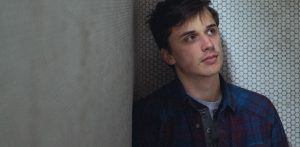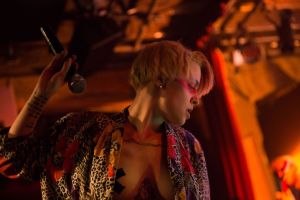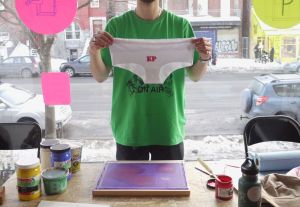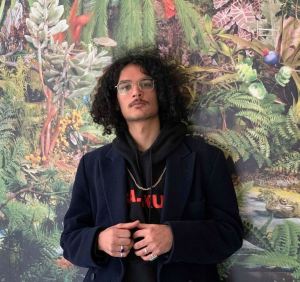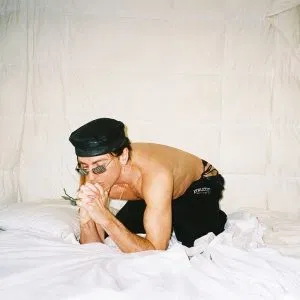Danji Buck-Moore, or anabasine, has played an integral part in Montreal’s electronic music scene for years. DJ, producer, engineer, Sleepover Drone Night performer, and member of psychedelic art-pop band Slight, Buck-Moore is also the co-founder of the Montreal rave crew Lagom and performs drone sets under the name A Picturesque Venus Transit. Following a classical music education at McGill, anabasine has explored various facets of sound – from auditory sonic structures to more subliminal experiences.
In anticipation of Fracture (Inner Circle Montréal & North Of Nowhere Records), I had the chance to ask him about his work, his influences, and what drone music does to your mind and body…
Your style has been described as celestial, from the psychedelic pop sounds of Slight to your dream-inducing drone soundscapes - what would you say are your greatest influences in making music, whether they are musical or not?
“Not to put too fine a point on it, but I suppose something I’m after with the music I make is adjacent to psychedelic perceptual states. With Slight, we’ve kind of condensed what that means for us down to “everything modulating all the time.” For my beat-driven music, I like to try to transpose that to rhythmic patterns and modulations, too. Music and sound can inspire visual imagination or be crafted from a visual inspiration – I like sounds that are immersive and might make you want to close your eyes to listen deeper, to listen with your body, or with your mind’s eye…”
Most people are unfamiliar with drone music. How would you describe the experience of playing a set for a room of sleeping people?
“Best audiences ever! Ideally, this kind of situation can take all the ego-tripping out of [the] performance. It has to come with a humble approach – you’re there to softly influence the dreams or dozing slumbers of a bunch of people in a very pure, raw, and vulnerable state. It’s both super enjoyable and also I hold myself to a very high standard cause I don’t wanna give anyone bad dreams, or break the vibes!”
Aside from the sleeping part, can the mind/body experience similar states while listening to drone music as at a rave?
“I think there are real parallels between dancing for long hours at raves and listening to long-form drone music. They are both immersive trance states, and both involve putting the act of listening (or Deep Listening perhaps) into your body, albeit in a more passive way with drone and a more active way with beat-driven dance music. I think that both involve some sort of intellectual surrender to the direct action of sound waves on your physical body.”
In a previous interview, you stated that you stretch the chords from your favorite songs to make drone sets with a harmonic structure. What are some of your favorite pop songs and which ones sound good in drone form?
“I definitely experimented with this approach to great success with a handful of songs off of My Bloody Valentine’s MBV. “New You”is about as great and powerful a pop song as I’ve ever heard (even streeeeeetched out).”
In 2014 you collaborated on a film trilogy about the structure of techno that has been showcased at Art Basel Miami - how did you initially get into dance music and how has the German club scene been a part of that?
“I first got into dance music when my friend P showed me some A Made Up Sound / 2562 tracks and the Hessle Audio label, in 2012 I think. I had never really understood how complex and quasi-architectural the rhythmic and sonic structures of music could be. The next year I was in Düsseldorf, Germany studying at the Kunstakademie there, and tripped across Psycho Thrill in Cologne. There’s a relatively intact small scene from the early ‘90s dedicated to proper head-down Detroit/Cologne style acid techno and very progressive fast-moving mixing. I played my first DJ set in a WWII bunker there where they were still doing parties (RIP Bob). Those films were a collaboration with my friends Henning and Philipp that organically started out of our excitement around some of this stuff.”
Alluding to the metaphor of nightclubs and cinema, how do lights/visuals at a club compare to an experience at the cinema?
“In our second film in that trilogy, “Eine Endlose Zigarette / An Endless Cigarette” we tried to take advantage of the similarities between cinema and club: big blacked-out rooms with big sound and lighting systems, lots of people who mostly don’t know each other packed in rows facing the same direction. We were excited to notice that strobes and other lighting effects on screen really translated into the cinema itself – if you looked around the room it might look just like the ambient light around various corners of a dancefloor. (You can watch all those films here)“
What are you excited about in the Montreal electronic music scene? Are there any new projects you are working on?
“I really am excited about the next years here in Montreal, I think our little underground scenes are growing, newer artists are getting more experience, dance floors are slowly getting more mature, harder and faster sounds are becoming a little more common, I hear a lot more UK music than I did a couple years ago, and Montreal dance floors can go hard ;) ! Dedication and concentration inside of local scenes means a lot. I love to see people taking this seriously, putting some time and energy and research into it. We really need some new spaces to allow for this all to flourish and stay exciting though, that’s a challenge. I’m trying to work on setting up some good things for the near future with my Lagom crewmates Dom and Leticia. Facebook is increasingly terrible and difficult, so we run our promo email list only (sign up here if you wanna (do it before New Years ;) ). More specifically I’m also working on a couple EPs of dance tracks, which I hope to put out in the next year or so.”
All photos credit: Saad Al-Hakkak

